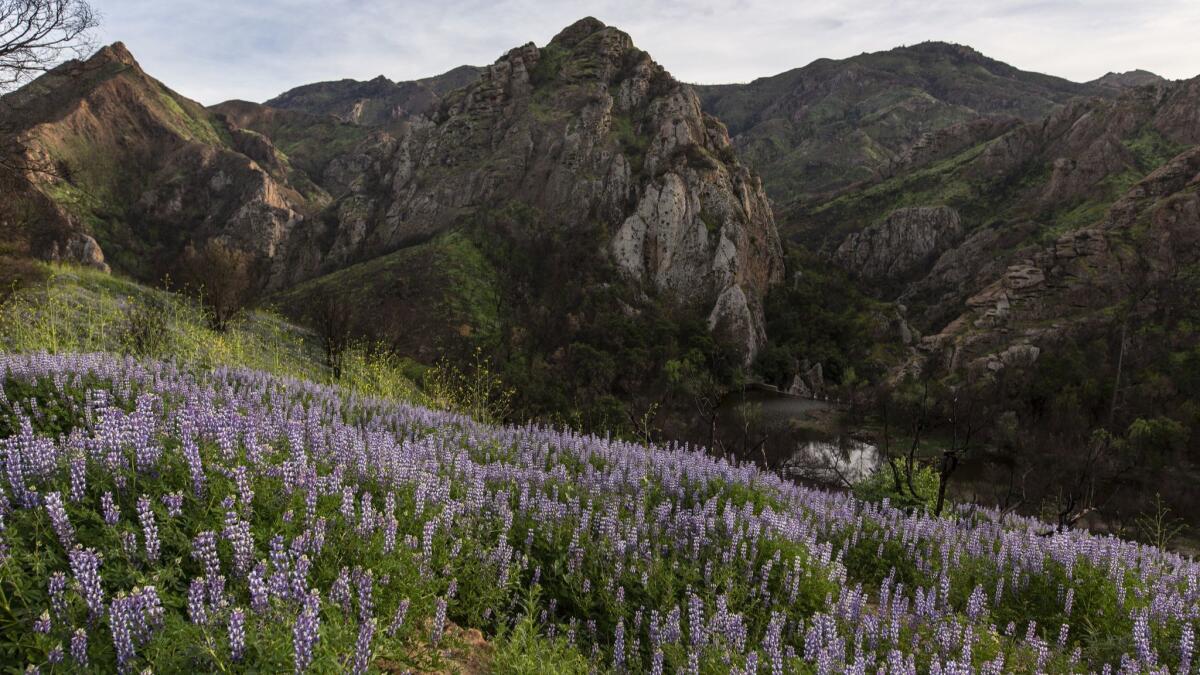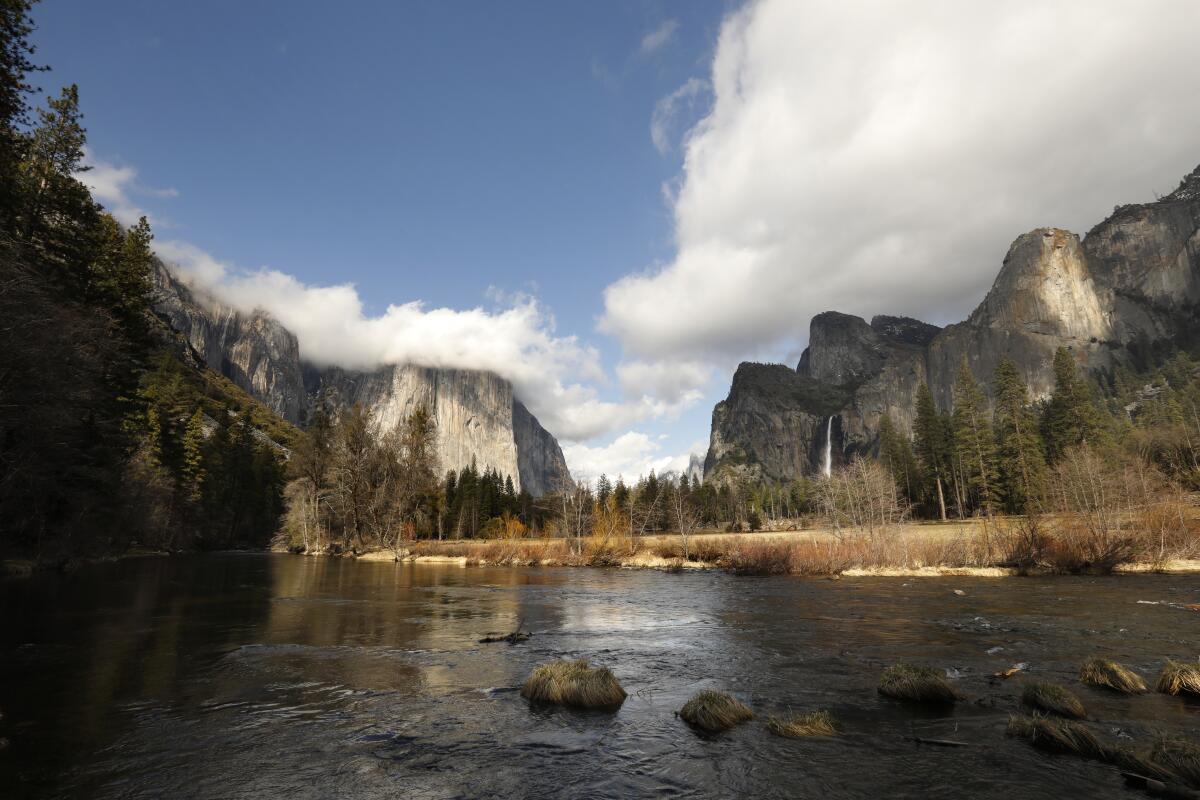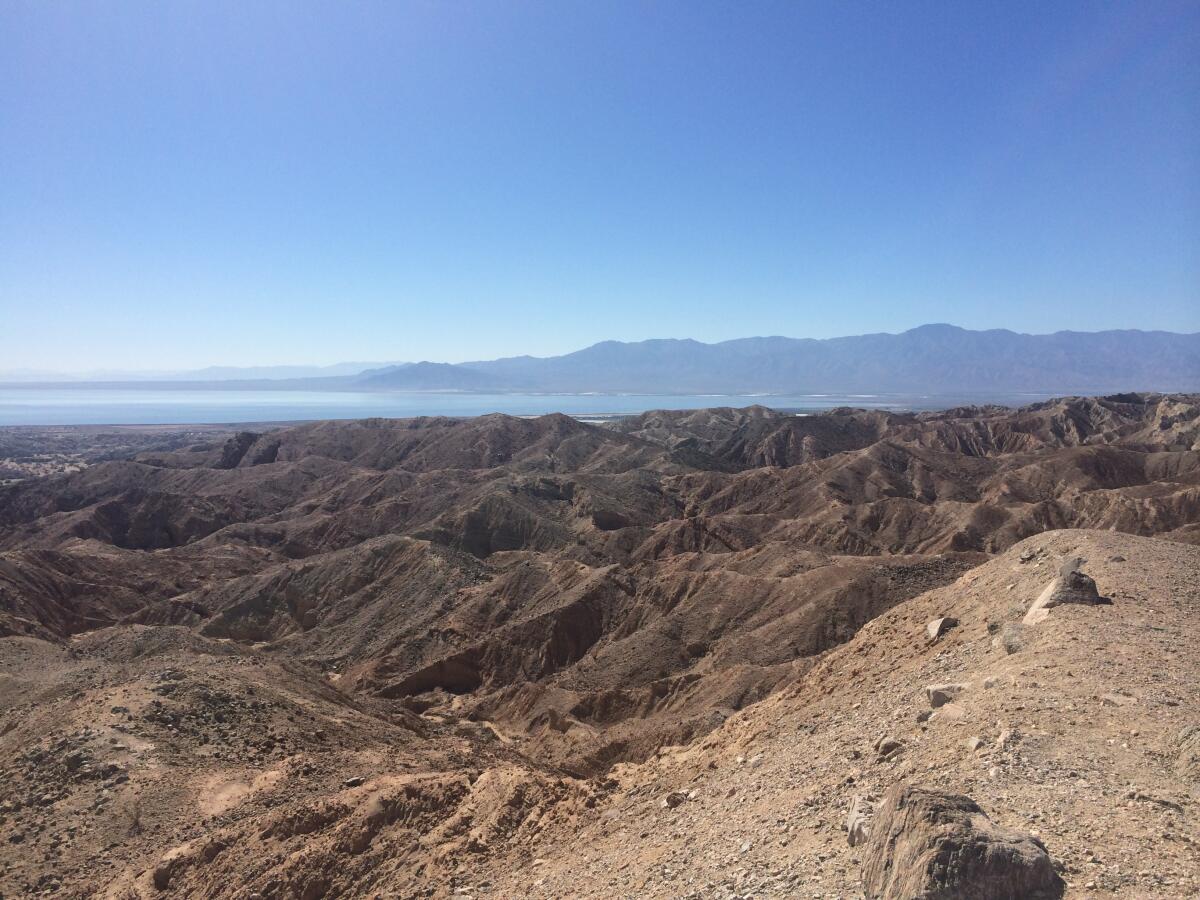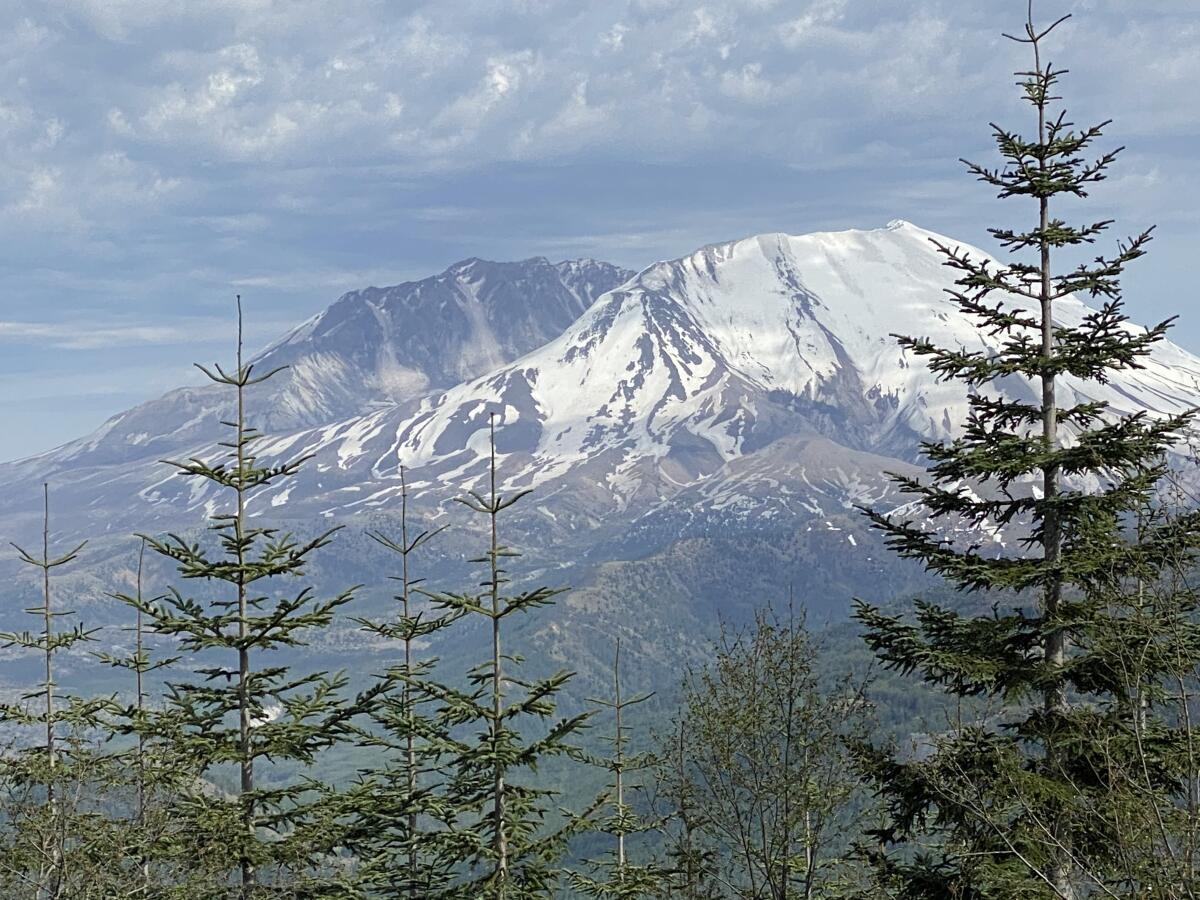Boiling Point: The ‘30 by 30’ plan to save the natural world

- Share via
Sammy Roth here, returning to your inbox with this week’s climate change and environment newsletter. Let’s get started.
One of the things I miss most about Life Before the Pandemic is getting out into nature. Even as Southern California parks and trails have started to reopen — Joshua Tree National Park is now welcoming visitors — I’ve hesitated to return. What if there are huge crowds, like those first few shelter-in-place weekends? And do I really want to hit the trail without my hiking buddies?
But it’s been comforting to know that pristine wilderness still exists. I can pull up photos of my favorite spots — Death Valley, the Grand Canyon, the Mecca Hills — and feel confident that these landscapes will be here long after the coronavirus goes away.
That’s what was on my mind when I learned about the “30 by 30” concept, a fascinating idea to save the natural world.
Toward a more sustainable California
Get Boiling Point, our newsletter exploring climate change, energy and the environment, and become part of the conversation — and the solution.
You may occasionally receive promotional content from the Los Angeles Times.
An international team of scientists first proposed protecting 30% of Earth’s lands and waters by 2030 — hence “30 by 30” — in the journal Science Advances last year. Calling their plan the “Global Deal for Nature,” they wrote that setting aside nearly one-third of the planet from human development could avert “points of no return” for many species and ecosystems.
The idea has taken on a life of its own.
The Convention on Biological Diversity — a global treaty that has been ratified by every United Nations member country, except the United States — is expected to adopt the 30 by 30 framework next year. U.S. Sen. Tom Udall (D-New Mexico) kicked off a virtual “Road to 30” tour with conservationists this week, promoting his legislation that would set a national 30 by 30 target.
In California, the Assembly’s natural resources committee approved similar legislation, cleverly designated AB 3030, last week.
About 12% of U.S. lands are currently protected, according to a report from the Center for American Progress, a left-leaning think tank. The figure is higher in the nation’s coastal waters, with 26% designated as marine protected areas.
In California, 22% of the state’s land area and 16% of its coastal waters are protected.

That doesn’t mean humans have developed the rest of America’s natural spaces — just that there’s nothing to stop us from doing so, legally speaking. You may have heard the statistic that the U.S. loses a football field’s worth of nature every 30 seconds. The data point can start to sound meaningless if you hear it too often, but stop and think about it. Every 30 seconds? That’s astounding.
Speaking during the “Road to 30” kickoff call, Enric Sala, an ocean scientist and one of the authors of the Global Deal for Nature, described some of the many ways that people have come to depend on intact natural ecosystems.
Healthy wetlands provide an important buffer against storm surges during hurricanes — but sprawling cities have paved over them to build subdivisions. Gray wolves provide a check on the deer and mice that help spread Lyme disease from ticks to humans — but humans hunted wolves nearly to extinction, an extermination that, some scientists say, has allowed Lyme disease to become common in the United States.
The COVID-19 pandemic, Sala said, “is the loudest wake-up call we’ve had in recent history.” Researchers have found that habitat destruction and biodiversity loss are making it easier for this kind of virus to spread from animals to humans.
“We have become totally out of balance with nature. And unless we get our balance back, our society as we knew it is going to be a thing of the past,” Sala said.

The “30 by 30” concept is no panacea.
As long as fossil fuels power the world economy, Earth will continue to heat up at an unnaturally fast pace, threatening all species and ecosystems, people included. And there’s no special magic by which 29.9% leads to total destruction, and 30.1% to salvation. In fact, the authors of the Global Deal for Nature see 30% by 2030 as a steppingstone on the road to 50% by 2050.
I called Ash Kalra, the San Jose assemblyman who introduced AB 3030, to ask him why his legislation doesn’t define “protected” with much precision, and doesn’t provide a mechanism to enforce the 30% target. He told me he’s trying to set a goal rather than create a mandate. He wants to give regulators and the public a chance to figure out together how 30 by 30 can be achieved.
“At the end of the day, we’re creating the world that we choose to live in,” Kalra said.
Here’s what else is happening this week:
TOP STORIES
Even in California, environmental protection is taking a backseat during the pandemic. Gov. Gavin Newsom’s updated budget proposal increases funding for fighting wildfires, per my colleagues Phil Willon and John Myers. But other environmental priorities would take a hit under Newsom’s budget. CalMatters notes that the state’s oil and gas regulator would not gain 120 new positions to help with oilfield inspections, and that a $1-billion loan program for local climate projects would also be shelved.
Major industries, meanwhile, are pushing state officials to ease pollution rules. The California Air Resources Board says it’s not slowing down its efforts to develop new regulations, although Southern California officials have postponed consideration of more than 10 air-quality rules, citing COVID-19, as Tony Barboza reports for The Times. In related news, California and eight other states are suing the federal government over its decision to relax pollution enforcement, per the Desert Sun’s Mark Olalde.
In a reminder of the dangers posed by climate change, thousands of Michigan residents were forced to evacuate after heavy rains overwhelmed two dams, threatening downstream towns with catastrophic flooding. Although it’s tough to pin any one extreme weather event on climate change, scientists have found that rising temperatures are upping the odds of devastating rains and floods. A similar dynamic was at play when the spillway at California’s Oroville Dam partially collapsed three years ago.
POWER STRUGGLES
It’s not often I get to write stories about NASA “plasma torches,” unwanted recyclables and Republican politicians focused on climate change. So I enjoyed reporting on this first-of-its-kind green hydrogen production facility planned for Southern California, which could go a long way toward boosting hydrogen’s potential as a climate-friendly fuel — if it’s successful. I’m sure Los Angeles officials will be watching closely, considering their plan to build the world’s first hydrogen-fueled power plant.
It’s still not clear how COVID-19 will affect renewable energy’s long-term prospects. Reporting for the San Diego Union-Tribune, Rob Nikolewski quotes a professor who explains that making energy predictions during a pandemic is difficult because “in the dark, all swans are black.” At least one short-term impact is clear, though: With energy use down, the U.S. is likely to produce more electricity from renewables than from coal this year for the first time, as the New York Times’ Brad Plumer reports.
Sometimes you have to read a headline twice to make sure you’re seeing it right. That was my reaction when I read that U.S. Energy Secretary Dan Brouillette, in an interview with Axios reporter Amy Harder, compared banks refusing to finance oil and gas exploration in the Arctic to the long-banned practice of redlining, in which mortgage lenders systematically discriminated against black communities. “I do not think banks should be redlining our oil and gas investment across the country,” Brouillette said.
Consider subscribing to The Times
Your support helps us deliver the news that matters most.
Become a Los Angeles Times subscriber.
THE GREAT OUTDOORS
Forty years after its famed eruption, Mt. St. Helens looms as a marvel and a threat. Our Seattle bureau chief, Richard Read, wrote a fascinating retrospective on the May 1980 earthquake and debris avalanche that caused a Washington state volcano to erupt, killing 57 people. The consequences are still playing out today; federal officials need to do some work at the site for public safety purposes, but scientists worry that building a road to bring in workers would threaten the area’s ecological recovery.

I’m still not sure when I’ll be ready to tiptoe back into the outdoors. But if you’re itching to get outside, you have options. Jeanette Marantos writes that botanic gardens across Southern California are starting to reopen, with physical-distancing rules in place. The Times has also been keeping track of which beaches, parks and trails are open; here’s a rundown. (But seriously, please be safe: You do not want to be one of the thousands of visitors crowding into Yellowstone National Park without a mask.)
If you’re not ready to venture into nature, you can also watch live video of outdoor spaces and try to spot fires. I’m not kidding; Southern California Edison has installed 161 cameras across its service territory as part of its state-mandated wildfire plan, and you can watch the feeds and report signs of trouble if you feel so inclined, as Joseph Serna writes for The Times.
What do you want to know?
When you think about California’s climate future, what keeps you up at night, and what gives you hope? What do you want to understand? What should I?
This newsletter is for you. I want to hear your questions, concerns and ideas. Email me or find me on Twitter.
ONE MORE THING
The wildest story I’ve read about this week is playing out in Montana, where the state’s Public Service Commission, which regulates utilities, is suing several news organizations — including the Billings Gazette, Yellowstone Public Radio and the Great Falls Tribune, owned by my former employer, Gannett — over public records requests seeking to scrutinize the agency’s actions.
The controversy stems from a bizarre “spying” scandal in which a commissioner’s emails were leaked to a right-wing website amid rising animosity between him and his colleagues. The commissioner in question has been the lone voice of dissent on several controversial decisions, including a recent vote that could pave the way for Montana’s largest utility to buy more coal-fired power.
My take? Government officials should turn over public records when asked, and not force journalists to fight them in court.
I’ll be back in your inbox next week. If you enjoyed this newsletter, please consider forwarding it to your friends and colleagues.




